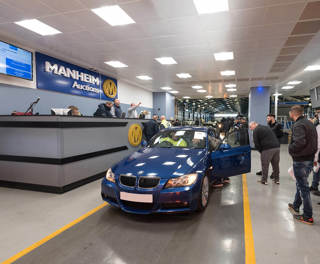Richard Peak, director at Nextbase
When is the right time to go all in on a new and developing technology? And will there ever be a right or perfect time to do so? The answers, of course, are that it depends, and no.
The last six months alone have thrown up a vast number of issues for fleet managers and fleet drivers, from skyrocketing petrol and diesel costs to driver shortages and rising inflation.
Alongside these challenges is the nagging and growing question of whether or not the time is finally right to transition to an all-electric or part-electric fleet.
This is not a new question, with fully-electric battery electric cars being widely used since around 2017, but the last two years have seen a huge rise in their popularity and, crucially their ability to get the job done.
It is also not a question of if, but when, with new petrol and diesel vehicle sales in the UK banned after 2030. How long to wait before that time, is the real question
In 2016, there were just shy of 60,000 battery-electric cars in registered in the UK. At the end of August 2022 that figure stood at over 530,000.
This is a huge jump that is indicative of a tipping of the scales in terms of range, reliability and cost for consumers.
Obviously, the requirements for a consumer differ significantly from that of a commercial driver.
An effective 200 mile range is more than enough for the vast majority of commutes. For a commercial driver? Perhaps not. This is just one issue to consider but it is a big one.
Range is also not something that can always be relied upon, thanks to the vagaries of battery performance and other drains on the battery like heating: starting a 100 mile journey with 100 miles of range is not going to get you there in one go.
Of course, this is true of internal combustion engine (ICE) cars too, having the heating on uses more fuel, as does a heavy load or even having the radio on.
The crucial difference is the lack of charging points currently available in the UK compared to the ubiquitous petrol station, and the time it takes to charge an electric vehicle (EV).
A further aspect to consider is the availability and choice of electric vans and other commercial vehicles.
This is lagging behind cars at the moment but this is certainly improving, with the number of electric vans in the UK increasing from around 5,000 in 2020 to nearly 30,000 so far in 2022.
The advantages of EVs are clearly growing, with significant cost savings on fuel against even the most efficient of traditionally powered vehicles.
The lack of congestion charges is also appealing alongside the obvious environmental benefits: No CO2 emissions or local pollution.
All of this leaves fleet managers between a rock and hard place, stuck between inevitable progress and the practicalities of the day-to-day requirements of the job and the fleet.
At this point – to my mind – the EV doesn’t feel like progress for most fleets. While of course for some it makes perfect sense, for many others there are just too many variables and unknowns to tackle to make it worthwhile.
I do believe, however, that we are not far off the tipping point where it will make sense.
Charging points and more importantly rapid charging points are becoming more and more common, and range and reliability of the vehicles themselves is increasing at pace.
We are fast approaching the EV commercial fleet but we’re still a few miles short.
> Interested in comparing electric vehicle data? Check out our EV tool.
> Interested in ensuring the efficient use of EVs. Check out our dedicated editorial sections: Insight & policy | EV news | Charging & infrastructure | Costs & incentives | Benefit-in-kind | EV case studies | EV road tests





















Login to comment
Comments
No comments have been made yet.